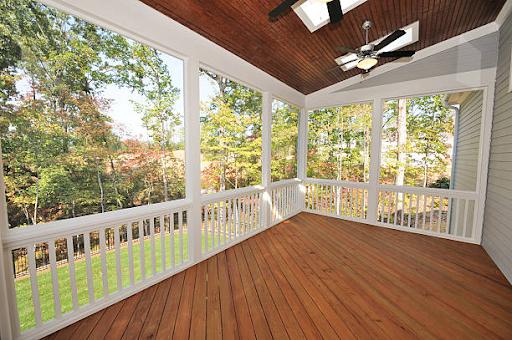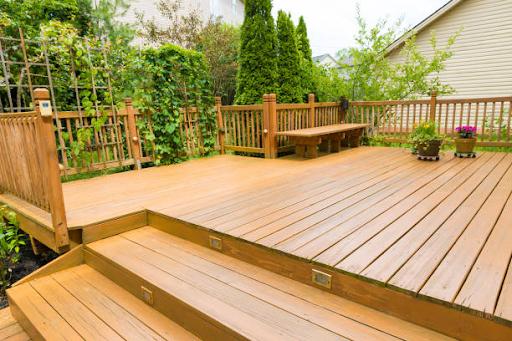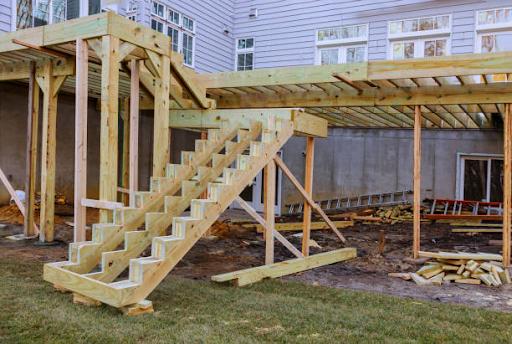How to Extend a Deck: The Best Way To Do It
One of the most enjoyable ways to increase living space is to build a deck. It serves as an extension of your home, allowing you to enjoy the great outdoors while remaining close to your house.
A deck not only expands the available area but also increases the house value and allows guests to choose whether to stay inside or outside. If you have a property with a small, cramped deck, though, it won’t help you to entertain as much.
When you’re disappointed by a limitation, it might be even more upsetting to learn how much it will cost to knock down and rebuild a deck. The good news is that if the original deck is structurally solid, you may want to consider just extending it.
A deck extension is not difficult to do, but don’t be fooled, this is not a job for the typical do-it-yourselfer. Advanced abilities and previous expertise with similar projects are required. Consider hiring a contractor to complete the project for you.
Consider These Points Before Extending an Existing Deck
- Ensure that your new construction complies with the building codes.
You should consult your local building department before deciding to add to an existing deck. For different reasons, this may not be permitted in your location. You can bring some photos of the current deck with you to help explain your issue.
Before issuing a permit, the inspector will normally study the permit and inspection records for the existing deck and may request an as-built framing inspection to verify the deck’s condition. (Decks.com, 2021)
- Examine the Substructure of Your Existing Deck
It’s critical to ensure that the existing deck is physically stable before extending or lengthening it.
- Look for signs of rotting, cracking, or other deterioration in the framing.
- Make sure the ledger board is correctly anchored to the side of the house if the deck is attached to the home (not freestanding).
- Inspect the pillars that support the deck underneath for signs of heaving and thawing.
Use this renovation as an opportunity to replace the old deck if needed. Even if you’re just adding a new level to the deck and won’t be using the existing foundation to support the new piece. (Timbertech, 2021)
- Check for a strong joist-to-beam connection
Some deck builders will sister the new joists back over the existing beam and place a new beam in front of the current deck. The sistered joists are fastened into the existing joists on both sides and reach at least 6″ beyond the beam.
To make a strong joist-to-beam connection, hurricane ties are used. To sustain the higher loads, new posts and footings may be required beneath the current deck beam.
Most individuals who extend their decks also replace the decking and rails on their existing decks. This will result in a more seamless addition with less color and weathering variation in the materials.
- Plan the layout of your deck
Use mason string linked to batter boards or wood stakes to plan the layout of your deck. Contractors will use this method to maintain the deck level and square. You may use it to envision the deck’s placement during the planning stage.
Take into account space constraints and place your selected lawn furniture inside the mason string zone. Don’t forget to consider the amount of sun or shade your deck extension will receive. (How Stuff Works, 2021)
- Hire a contractor
If you want to hire a contractor to build the deck extension for you, it’s a good idea to go through all of these procedures. This way you will know what to expect and can be as specific as possible when negotiating and outlining your needs.
Best Decking Materials
Deck material is an important factor to consider. You might choose cedar decking, which looks fantastic at first but will quickly deteriorate.
If pressure-treated wood is of excellent quality and is treated on a regular basis, it will last a long period. Composite decking is low-maintenance and won’t splinter or warp, but it doesn’t look as nice as wood and will show nicks and scratches. (Better Homes & Gardens, 2017)
Framing a Deck Extension
Extending a deck will depend on how you’ll want to expand it. It can be at the same level, a step-down, or a step up.
|
Same Level Extension |
Step-Down Extension |
Step-Up Extension |
|
To extend the deck on the same level as the deck, you will use one of your existing substructure’s support beams as the ledger board for your additional section. To build the structure for the expanded section, join your other support beams and joists on this board. |
You’ll need enough space beneath your current deck to install the joists and support beams if you go this route. The support beam from your current deck can be used as the ledger board for this project. However, the joists will be fastened to the bottom rather than the top. |
You’ll begin your new substructure frame on top of the old substructure in this option. Fix a support beam to the existing substructure’s top. Then use it as a ledger board to connect the remainder of your frame. |
Deck Extension Process
ProTip Takeaway: Installing suitable post footings and anchoring the joist along the edge of the existing deck are important aspects of a successful deck expansion.
The Layout
Step 1: Pick the side of the existing deck from which you want to extend. If you require a huge extension, work along one long side, or build on to the end if you only need a few additional feet.
Step 2: To indicate the outline of the proposed extension, hammer wooden stakes into the corners. Attach the outside corners of the deck face you’ll be attached to with screws.
Step 3: To make a string outline, tie mason’s twine from the screws to the posts and between the posts. Adjust the twine with string levels to the height of the top of the deck’s original edge joist.
Step 4: With a tape measure, measure along the string and wrap a piece of tape every 8 feet to indicate a post position. Under each marked location, dig a post hole 10 to 12 inches broad and 24 inches deep.
The Exterior Frame
Step 1: Using a circular saw, cut your posts to length a little longer than you need them, and place one post in each hole. Half a bag of dry concrete should be used to fill the bottom of each hole.
Step 2: Cut a joist that is 3 inches shorter than the deck’s outside joist. Clamp the newly cut joist to the original joist’s face with C clamps. Every 4 feet, drill 5/16-inch bolt holes through both joists. With a washer and nut, fasten a 3 1/2-inch-by-5/16-inch bolt into each hole. Use a socket wrench to tighten them.
Step 3: Using a circular saw, cut rim joists from 2-by-8 or 2-by-10 lumber to fit from the deck. Do this while extending out to the outside face of your corner posts, to match the existing joist.
Drill holes in the joists and attach them to the exterior face of your posts. Doing this will ensure that they are level with the existing joist. Metal corner brackets are used to connect the new joists to the ends of the joists that were bolted in place. On the outside end of this frame, cut and install a joist in the same way.
Deck Extension Completion
Step 1: Every 16 inches run a joist perpendicular to the existing deck flooring across the open frame of the extension. Use metal joist hanger brackets to join the joists. You will also use 1 5/8-inch treated deck screws and a cordless drill to secure the brackets.
Step 2: Using a scrap of lumber, thoroughly mix water into the concrete in the post holes. Fill in the holes with dirt and firmly pack it down. Using a reciprocating saw, trim the post tops to match the top edge of the joists.
Step 3: Install deck boards that match the existing deck, running parallel to the existing decking and perpendicular to the spaced joists. Use two 1 5/8-inch treated deck screws in each joint between the deck board and the joist.
Use a circular saw to cut your boards to fit the ends of the deck. If any decking board ends will be exposed to foot activity, use a router or rotary tool with a round-over bit to round them over gently, removing sharp corners and preventing splinters. (SFGcate, 2021)
ProTip Takeaway: To maintain consistent aesthetics and no color mismatch throughout the entire surface resurface the entire newly enlarged substructure, rather than only the newly added area.
Are You Ready To Extend Your Deck?
You’re ready to analyze your project now that you have a high-level notion of how to extend a deck. To be completed properly, a deck extension project needs time, as well as the appropriate tools and expertise.
Consult with a Smart Remodeling LLC in Houston, Texas if you’re unsure how to extend a deck or have any questions. Our contractors have extensive product knowledge and industry experience to ensure that your deck extension is completed to perfection. Contact us today for a free consultation.









